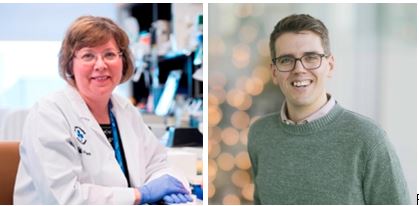 Researchers use mouse models of ovarian cancer to better understand the disease and develop new treatments. However, it can be difficult to know which model is best for a particular experiment.
Researchers use mouse models of ovarian cancer to better understand the disease and develop new treatments. However, it can be difficult to know which model is best for a particular experiment.
To help with this, Drs. David Cook and Barbara Vanderhyden collaborated to develop the first comprehensive field guide to 22 mouse models of high-grade serous carcinoma, the most common kind of ovarian cancer. To do this, the team used RNA sequencing to determine which genes were being turned on and off in single cells taken from each model.
This gave insight into these mouse models’ traits, as well as the properties of the ovarian tumours they form. This identified models that were most suitable for specific objectives, such as studying chemotherapy resistance or testing new immunotherapies.
The team anticipates this field guide published in Communications Biology will be a valuable resource to help researchers find the most appropriate mouse model for their experiment.
Authors: David P. Cook, Kristianne J. C. Galpin, Galaxia M. Rodriguez, Noor Shakfa, Juliette Wilson-Sanchez, Maryam Echaibi, Madison Pereira, Kathy Matuszewska, Jacob Haagsma, Humaira Murshed, Alison O. Cudmore, Elizabeth MacDonald, Alicia Tone, Trevor G. Shepherd, James J. Petrik, Madhuri Koti & Barbara C. Vanderhyden
Funding was provided by a grant from Ovarian Cancer Canada as part of the OvCAN research initiative funded by Health Canada.
The Ottawa Hospital is a leading academic health, research and learning hospital proudly affiliated with the University of Ottawa and supported by The Ottawa Hospital Foundation.
